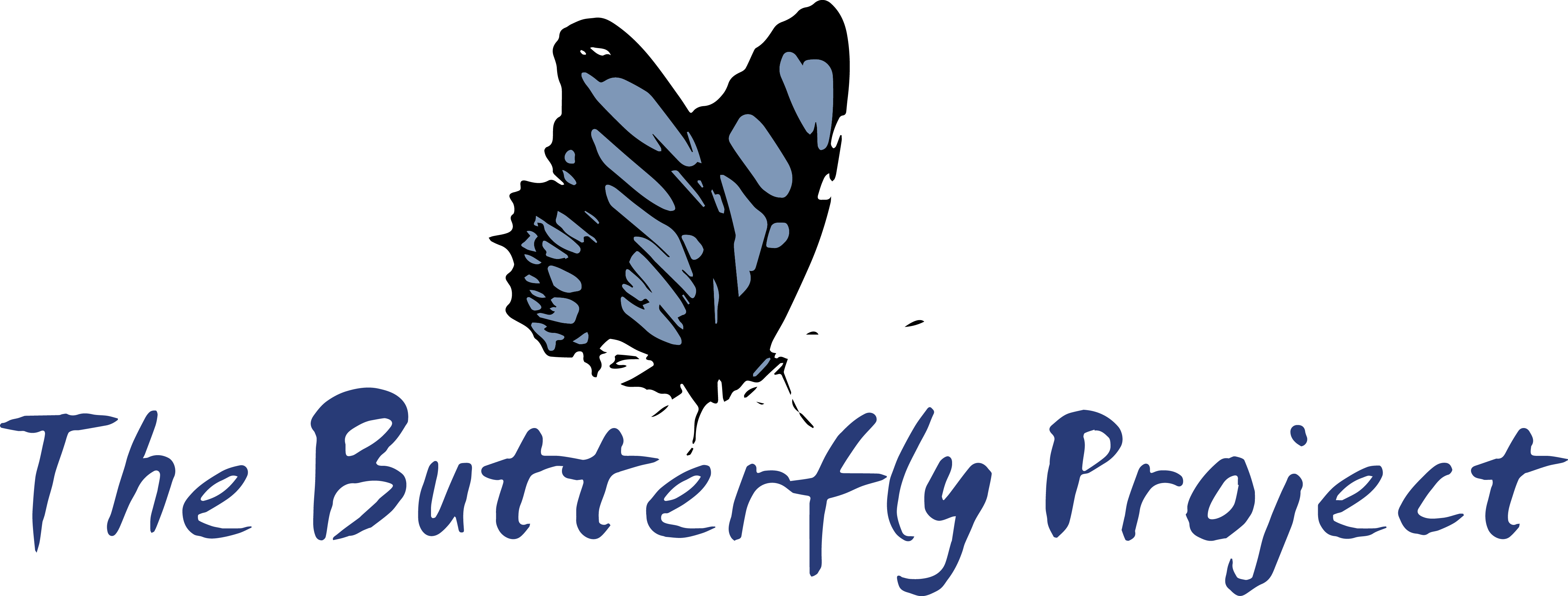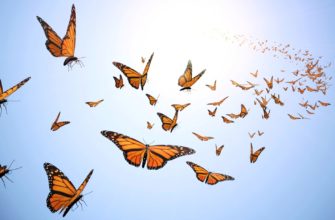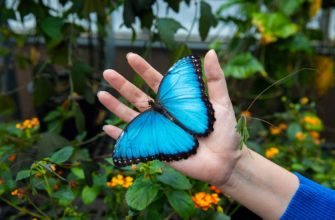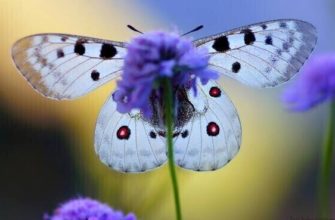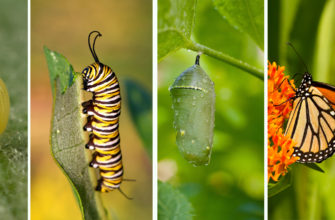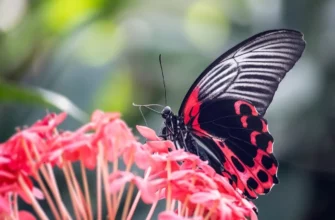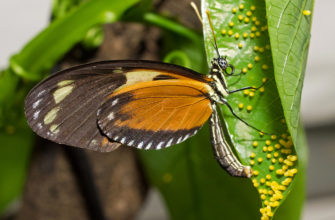Butterflies are a beautiful sight to behold, but they are also a source of food for other animals. Predators such as birds, mammals, and reptiles consume butterflies for their protein-rich diet. These animals see the fluttering insects as a sumptuous treat and chase them down or pick them off leaves or flowers.
In the animal kingdom, there are various species that feed on butterflies. Birds like sparrows and robins can often be seen taking flight after spotting vibrant-colored wings flapping in the wind. Butterflies are also prime targets for lizards like chameleons, who mimic branches or leaves to get closer to their prey unnoticed.
Some ants see caterpillars (the earlier stage of butterflies) as high-value food sources and will hunt them down when they spot them crawling through the grass. Mammals such as shrews and mice can also intercept unsuspecting butterflies as they fly low to the ground.
A helpful way to protect our butterfly population is by ensuring your garden has plenty of plants that attract these insects. This ensures there is enough food available for these beautiful creatures, making them less vulnerable to predators. Planting specific herbs like dill or parsley attracts some butterfly species while utilizing milkweed plants attracts others!
Who needs a butterfly net when you have a stomach? These animals prove that a fluttering snack is worth the chase.
Animals that Eat Butterflies

Numerous creatures feed on the delicate and vibrant butterflies, a common prey for some animals. These animals that predate on butterflies play a significant role in the ecosystem.
Animals that Eat Butterflies:
- Birds
- Frogs
- Spiders
- Praying Mantis
- Bats
- Monkeys
Insects like bees, wasps, and flies are predators of butterfly eggs. These insects pose a considerable threat to the butterflies’ breeding grounds and numbers.
Butterflies have a unique defense mechanism that incorporates harmful toxins found in certain plants. Their preference for such plants makes them toxic to predators like birds and other animals. (source: National Geographic) Why chase after a butterfly when you can just wait for a bird to swoop in and make it a snack?
Birds

Predatory avian creatures have an unquenchable appetite for butterflies, mesmerized by their captivating beauty and delicate movements. These feathered hunters are well-adapted to catch their fluttering prey with remarkable speed and agility.
Many raptors, such as falcons and hawks, are notorious butterfly predators, snatching them mid-flight with their sharp talons and powerful beaks. Other species like woodpeckers, flycatchers, and warblers also eat butterflies but in smaller quantities.
Interestingly, most birds that eat butterflies avoid consuming their wings, which provide no nutritional value. Instead, they prey on the abdomen or thorax.
Birds primarily hunt butterflies during the day when these insects are most active. To protect these beautiful creatures in your garden, consider planting butterfly-friendly plants away from areas that attract bird feeders. You can also use natural predators as a means of controlling butterfly populations. For example, ladybugs love feasting on aphids that often harm plants favored by butterflies.
Why bother with a butterfly net when you can just be a bat and catch them with your wings?
Bats
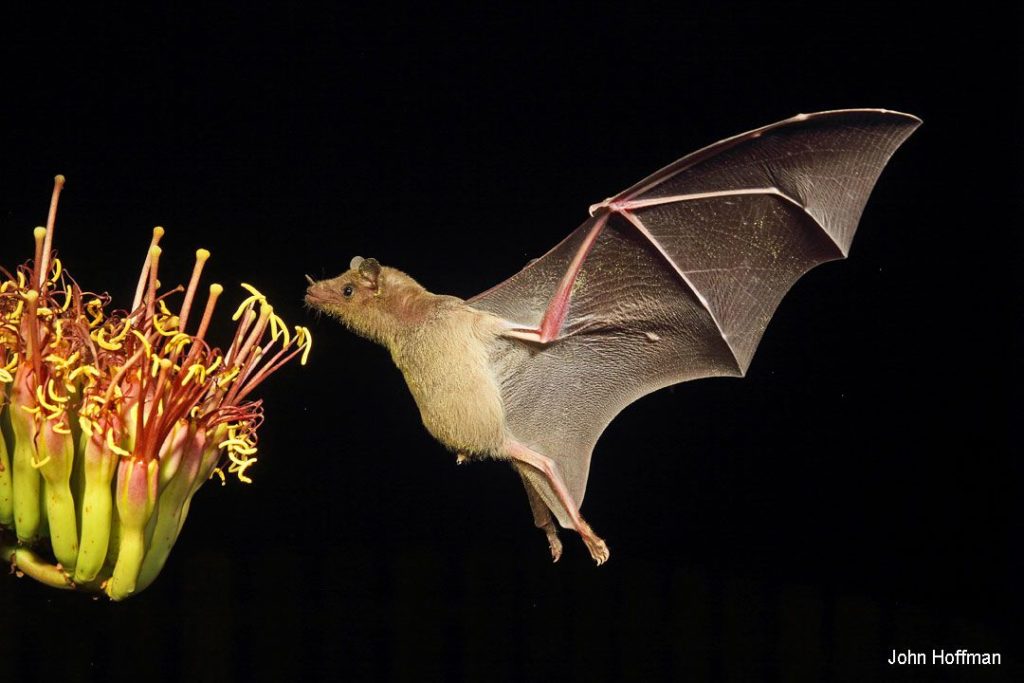
Here is a table of some bat species:
| Common Names | Scientific Names | Lifespan |
| Mexican free-tailed bat | Tadarida brasiliensis | Up to 18 years |
| Big brown bat | Eptesicus fuscus | Up to 20 years |
| Pallid bat | Antrozous pallidus | Up to 12 years |
In addition, some bat species have adapted themselves to feeding on specific flowers’ nectar, providing cross-pollination services. They also act as seed dispersers contributing to the forest’s regeneration and diversity.
Studies have revealed that bats’ guano helps fertilize soils and promote plant growth since they provide nutrients like nitrogen, phosphorous, and potassium.
According to a study by Julian Donald Alford published in The Journal of the Lepidopterists’ Society, on the dietary habits of bats in Southwestern Utah: “Seventeen species (89%) consumed moths or butterflies.”
All in all, bats are fascinating animals with diverse roles in shaping our environment’s well-being.
Spiders: the only creature whose web-slinging abilities rival those of a certain superhero, but instead of saving the city, they just catch butterflies.
Spiders
A table outlining spider species that eat butterflies is shown below:
| Spider Species | Type of Butterfly Consumed |
|---|---|
| Crab Spider | Various |
| Nursery Web Spider | Eastern Black Swallowtail, Monarch, Red Admiral |
| Jumping Spider | Blues, Whites, Skippers. |
It’s interesting to note that some spider species have adapted to capture specific types of butterflies with unique hunting techniques. For example, Crab Spiders can change their color to match the color of flowers, tricking butterflies into landing on them.
Interestingly, researchers in Japan found that the orb-weaving spider (Cyclosa argenteoalba) sometimes builds its web alongside ant trails and eats the ants that inadvertently damage their webs.
According to National Geographic, certain butterflies contain toxic substances derived from plants they feed on, which may deter spider predators.
If the Praying Mantis were a superhero, its power would be the ability to take down butterflies faster than a speeding bullet.
Praying Mantis
The insect commonly known as the ‘Praying Mantis’ is a fascinating creature that belongs to the Mantodea family. These predatory insects are well-known for their striking physical appearance and their unique hunting strategies. They have long, spiky forelimbs which they use to catch prey such as butterflies, moths, and other insects.
Praying mantises are also known for their impressive camouflaging abilities, which enable them to blend in seamlessly with their surroundings and ambush unsuspecting prey effectively. Their sharp vision allows them to spot potential meals from a distance of up to 60 feet. Additionally, they possess remarkable flexibility in their necks, which enables them to rotate their heads almost 180 degrees.
Interestingly, some species of praying mantis have been observed engaging in cannibalism during mating rituals, where the female mantis will consume the male after or even during reproduction.
To attract these predatory insects to your garden or yard, provide a variety of plants that will draw butterflies and other prey species. Additionally, creating sheltered areas like rock piles or log piles can offer good hiding places for these insects while they wait for prey.
Insects may work in teams to bring down their prey, but let’s be honest, they’re still just a bunch of tiny killers with a Napoleon complex.
Insects (such as wasps and ants)
Insects, including ants and wasps, are natural predators of various insects, including butterflies. These creatures have distinct hunting capabilities that aid them in tracking their prey with precision and attacking them swiftly.
- Ants are omnivores and will consume any insect that comes in their way, including the colorful butterfly. They can swarm over a butterfly and tear it apart using their powerful mandibles.
- Wasps are carnivorous insects that feed on other insects’ larvae or pupae as well as nectar. They have a narrow waist, which gives them an advantage in capturing butterflies with their sting. Once stung by a wasp, the butterfly becomes paralyzed and easy prey.
- Certain types of beetles have adapted to thrive on butterfly eggs or larvae. They lay their eggs near the host plant where butterflies lay their eggs so that upon hatching, they can quickly find and eat the developing caterpillars (larvae) before they get too big for consumption.
Interestingly, some species of ants raise aphids as pets to feed on the honeydew these sap-sucking bugs excrete. By controlling the aphid populations around plants where butterflies lay eggs, they may indirectly affect butterfly populations.
Whether you’re an avid nature-lover or simply curious about what animals eat butterflies, it’s undoubtedly fascinating to learn about these lesser-known truths about our world.
Don’t miss out on exploring more intriguing facts about nature’s food chain!
Snakes love a good butterfly banquet, but they always leave a little room for dessert… in the form of terrified rodents.
Snakes
For those curious about serpent predators, there are a few subtypes that prey on butterflies. These snakes include the green tree python, which is known for its emerald color and tendency to ambush insects in trees. Additionally, venomous pit vipers like the copperhead and cottonmouth have been known to consume butterflies.
| Types of Snakes | Prey on Butterflies? |
| Green Tree Python | Yes |
| Copperhead | Yes |
| Cottonmouth | Yes |
It’s important to note that while these snakes may occasionally eat butterflies, it’s not their primary food source nor a common occurrence. In fact, most wild snake diets consist almost entirely of rodents and other small mammals.
If you want to protect butterflies in your area, consider planting native plants that the insects feed on and using natural pest control methods instead of chemical pesticides.
Another suggestion is to create butterfly-safe habitats by leaving pieces of yard un-mowed or uncultivated, as this provides shelter for pupae and cocoons. By taking these steps, it’s possible to help preserve both butterfly populations and snake ecosystems.
Lizards may be cold-blooded killers, but at least they have the decency to spice up their diet with a little butterfly sushi.
Lizards
These butterfly-eating lizards include the green anole, Carolina anole, and the knight anole. These lizards often consume caterpillars as well as adult butterflies. In some cases, they use their sharp tongues to catch flying butterflies in mid-air.
Interestingly, the knight anole is known to disguise itself as a flower to attract butterflies before capturing them with its tongue. This predatory behavior has evolved as a response to the abundance of winged insects in their habitat.
A naturalist once observed a green anole devouring a monarch butterfly by strategically breaking off its wings first before consuming the rest of its body.
Eating butterflies is like a high-end spa treatment for predators – it’s all about getting that delicate balance of protein and antioxidants.
Benefits of Eating Butterflies for Predators

As butterflies are a common source of food for many predators in the animal kingdom, they offer several benefits for predators. Eating butterflies provides a good source of protein, vitamins, and other essential nutrients to predators. Furthermore, consuming butterflies can help predators to develop their hunting skills as they have to chase and catch them. In addition, butterflies may also contain toxic substances that predators can use for their own self-defense.
It is also worth noting that some predators, such as birds, are known for their preference for specific types of butterflies, depending on their size and color. This variation in preference can be due to the predator’s specific dietary requirements, which may be influenced by their habitat or the time of the year. Understanding these preferences can be helpful for those who study predator-prey relationships and can contribute to conservation efforts for butterflies and their habitats.
Pro Tip: If you are planning to observe predators hunting butterflies, be sure to do so without interfering in their natural behavior. Keeping a safe distance and using binoculars or other equipment can help you observe and study their behavior without disturbing them.
Butterflies may not have much nutritional value, but apparently they still make for a tasty snack if you’re a bird or a lizard with questionable taste in cuisine.
Nutritional value
Predator’s Dietary Benefits from Butterflies
Butterflies, a nutritional boon for predators, are a valuable source of sustenance. Rich in protein and lipids, their consumption is known to improve overall health in animals.
In terms of nutritional value, let us take a look at the table below:
| Nutrients | Quantity |
|---|---|
| Protein | High |
| Lipids | Rich |
| Minerals | Adequate |
| Vitamins | Abundant |
The high protein content and abundance of vitamins in butterflies are particularly beneficial to predators. Additionally, the richness of lipids and adequate mineral composition aids in promoting growth.
Apart from the above details mentioned earlier, it should be noted that some species of butterflies contain toxic compounds which may reduce their palatability. However, certain predators have evolved mechanisms to tolerate or even utilize these toxins for their own defense.
Do not miss out on such an advantageous nutrient source! Predators can greatly benefit from including butterflies in their diet.
Remember – missing out on this food source could hinder potential survival benefits!
Predators have some serious defense mechanisms, but nothing beats the shock value of chomping down on a butterfly mid-flight.
Defense mechanisms
Predators have evolved various ways to protect themselves from predators. These mechanisms can vary from physical features like spines and armor to behavioral patterns like mimicry and camouflage. The primary goal of these defense mechanisms is to avoid being eaten.
Butterflies, for instance, rely on their bright colors as a defense mechanism against predators. Some butterflies contain toxins that make them taste bad or even poisonous to predators. However, some predators have adapted to consume these toxic butterflies and utilize the toxins in their own defense against predators.
One unique adaptation is found in the African bat’s diet of consuming the woolly butterfly, which secretes a chemical called tyrian purple. This dye spreads across the bat’s fur and creates an unpalatable taste for its attackers. Not only are bats avoiding predation thanks to eating this species of butterfly, but they also acquire an added layer of protection after consuming it.
If predators started eating politicians instead of butterflies, we might actually see some effective population control.
Population control
Predator-Prey Dynamics – How Butterflies Help in Natural Population Control
In nature, the survival of the fittest is paramount. The predator-prey relationship is one of the most important for regulating the natural world’s population. Predators like birds, frogs, and other insects depend on butterflies as a vital food source. Butterflies play a significant role in balancing and controlling their ecosystem.
Butterflies are an excellent choice for predators as they offer a high protein diet with low levels of toxins. Additionally, some species of butterflies are prolific breeders, providing predators an abundant food supply. When predators consume butterflies regularly, it limits their population growth, ensuring that there is always enough to feed on while controlling their numbers.
Moreover, butterfly consumption has another benefit for predators: it helps them acquire necessary nutrients that they require to thrive in their habitats. Butterfly consumption provides essential vitamins and minerals like calcium that help protect against bone diseases.
History reveals how specific animal populations explode when predators declined due to human interventions in ecological balance. The eradication of predators causes ecological disturbances throughout the landscape, making it difficult for any living species to survive adequately or naturally manage its population without outside intervention.
Why be a butterfly when you can be a ninja butterfly, equipped with camouflage and toxic defenses against predators?
Butterfly Survival Techniques Against Predators
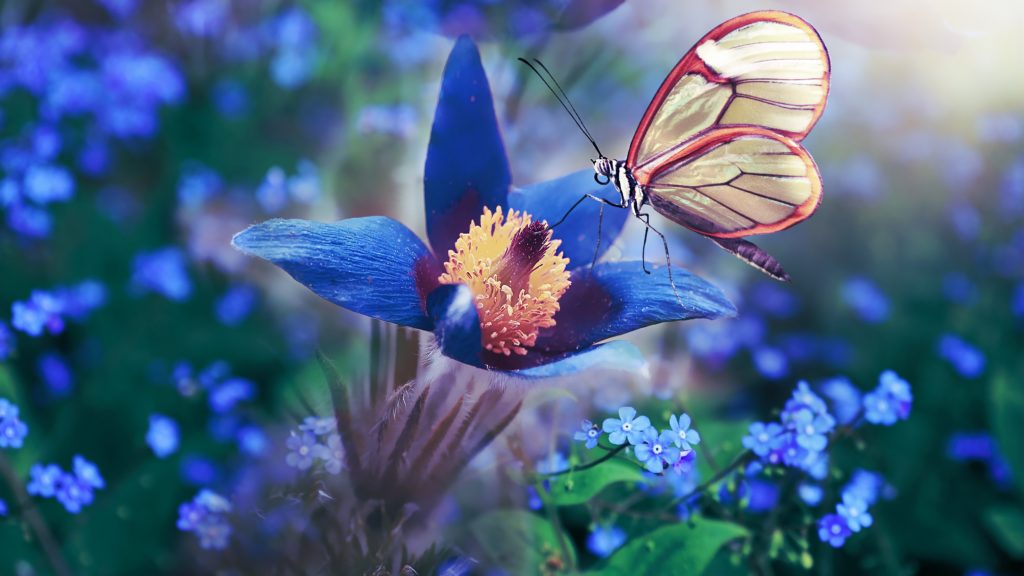
As a vulnerable species, butterflies have developed various techniques to protect themselves from predators. These techniques include camouflage, mimicry, toxicity, and flight. Camouflage allows some butterflies to blend in with their environment, making it harder for predators to spot them. Mimicry involves imitating the appearance of a similar-looking species that predators do not want to eat. Some butterflies have brightly colored patterns that indicate toxicity, signaling to predators to stay away. Finally, butterflies have evolved to be adept flyers that can quickly evade predators. These techniques have allowed butterflies to survive in various environments despite numerous threats.
It’s worth noting that some butterfly species have developed specialized defenses against particular predators. For instance, some caterpillars have evolved to secrete fluids that protect them from ants. These fluids may be uncomfortable or even toxic to ants, thereby reducing predation risk. Additionally, some butterflies lay their eggs on specific host plants, which may be unpalatable to predators. These unique adaptations enable butterflies to target predators and reduce their risk of being eaten.
If you want to help protect butterflies in your area, there are several things you can do. Disrupting their habitats by removing host plants, spraying pesticides, or overgrazing can have adverse effects on butterfly populations. Instead, consider creating a butterfly garden by planting native host plants and flowers. This will provide a safe haven and food source for local butterfly populations. Additionally, reducing light pollution and practicing responsible outdoor recreation can also benefit butterfly populations. By taking steps to protect butterflies, we can mitigate the risks they face and help ensure their survival.
Butterflies may think they’re hidden with their fancy camouflage wings, but to predators they’re like a neon sign saying ‘Eat Me.’
Camouflage
Butterfly Disguise Techniques Against Predation
Butterflies use a variety of methods to evade predators and camouflage is one of their most effective survival techniques. Here are three ways in which butterflies use disguise to stay safe:
- Mimicry: Butterflies have evolved to mimic the appearance of harmful or distasteful species. This helps deter predators from attacking them.
- Cryptic Coloration: Some butterflies blend in with their surroundings by developing color patterns that closely match those of nearby objects like leaves, bark, or flowers.
- Wing Deception: Certain butterfly species have eye-like markings on their wings which can be used to startle or confuse potential predators.
In addition, some butterfly species also use behavioral camouflage such as sitting still with wings closed to resemble a dead leaf in order to avoid detection.
Pro Tip: Butterfly camouflage is not just for protection; it is also essential for courtship and communication among different species. Take time to observe the colorful patterns and behaviors of these remarkable creatures in their natural habitats.
Butterflies may not have ninja skills, but their chemical defenses pack a punch against their predators.
Chemical defenses
Remarkable self-defense adaptations of butterflies are their chemical deterrents. The chemicals, called toxins, can cause severe health problems or even death for the predator. The toxins may be stored in the taste receptors or exuded from a glandular structure on the butterfly’s body. The defensive strategy discourages predators and increases their survival rates.
Butterfly chemical defenses are more than just a repellent smell; some of these “chemicals” are toxic molecules produced by specialized cells within their tissue and glands. Lepidopterans employ different types of chemical defenses according to the potential threat and predator type; it gives them an edge against both vertebrates and insects.
The defensive chemicals themselves emerge from various active synthesis sites around the butterfly’s body, such as thoracic scent glands, secondary metabolites derived from consumed plants, or through biosynthetic pathways found inside epidermal muscle cells. These compounds act like bait to lure predators away from consuming vital tissues, making them critically associated with prey-predator interactions in certain microhabitats where they coexist.
Sitting still on a green leaf in a tropical rainforest, the emerald swallowtail could afford to relax: its iridescent wings blend perfectly with its surroundings for camouflage defense. Suddenly, out of nowhere darts a flash of red feathers circling towards it — a crimson-crowned woodpecker looking for lunch! In response to this aerial attack threat – the swallowtail starts releasing potent alkaloids that cause regurgitation and upset stomach in birds. The bird soon realizes that prey is not worth pursuing- fly away hungry but unharmed.
Who needs a superhero when you can just mimic a poisonous butterfly and scare off your predators?
Mimicry
Mimicry, the Art of Deceit
Butterflies have evolved a unique technique called mimicry to deceive their predators. This is achieved through the process of resembling another organism or object in their environment to deter predators from recognizing them as prey.
Combining Colors and Patterns: The Science Behind Mimicry
| Column 1 | Column 2 |
|---|---|
| Definition | A survival technique utilized by butterflies to avoid predators by resembling harmful or distasteful species. |
| Types | Batesian and Müllerian mimicry |
| Purpose | To reduce predation rates and increase survival chances. |
Through Batesian mimicry, harmless butterflies resemble toxic ones, tricking predators into believing they are dangerous. On the other hand, Müllerian mimicry involves multiple harmful species adopting similar warning signals, creating confusion for predators.
The Butterfly’s Sophisticated Mimicry Techniques
Several butterfly species use mimicry in ways that go beyond resemblances to avoid predators. For instance, some species imitate leaves that have been chewed on to make themselves less conspicuous while others use reflective spots on wings to create an illusion of movement and attract predator attention away from vital organs.
The Monarch Butterfly’s Impressive Migration
The monarch butterfly uses its bright colorations as a form of protection rather than relying solely on its camouflage techniques. Their distinctive orange and black patterns signal their toxicity, thus preventing potential attackers from preying on them. Every year these creatures undertake an incredible migration journey over thousands of miles between Mexico and North America that truly showcases their resilience.
Looks like humans aren’t the only species who could use some survival techniques against predators.
Human Impact on Butterfly Predation
Influence of Humans on Butterfly Depredation
Butterfly predators are affected by human activities. Human impact on butterfly predation is significant. Human interventions, such as habitat destruction, fragmentation, and pesticide usage, disrupt butterfly food chains. Besides, the encroachment of urban areas can lead to habitat destruction and encouraging the proliferation of predators, causing further distress to the species.
Furthermore, indiscriminate hunting of butterflies and capturing rare butterfly species for various purposes also contributes to their dwindling population. Natural butterfly predators such as birds, spiders, and ants are also affected by human activities, impacting the overall functioning of the ecosystem.
A Unique Detail:
Butterfly predators are impacted differently across regions. In some areas, certain predator species are more active than others, causing severe damage to the butterfly population. Understanding butterfly predators’ regional nuances is vital for maintaining a balanced ecosystem.
Fun Fact:
Butterflies can be cannibalistic and may feed on other butterflies. According to a study conducted by entomologist Dr. David Wagner, a female butterfly was spotted attacking and consuming a male butterfly of the same species. When it comes to pesticides, butterflies might as well be called ‘butter-deadflies’.
Pesticides
Chemicals for Insect Control
These chemicals are widely known as human-made substances that control and kill insects harmful to crops, livestock, or humans. These are commonly used in agriculture and the environment with two major types of pesticides – synthetic and biological. The usage has been a controversy due to its negative impact on non-target species, including butterflies.
- Pesticides have different effects on butterfly populations, ranging from direct mortality to indirect effects on food availability.
- The chemical composition of pesticides can lead to developmental anomalies that affect the life cycle of butterflies.
- The residues can stay in soil or plant materials leading to long term effects such as habitat degradation and loss of biodiversity.
The effect of pesticides on butterfly predation is an important issue in environmental conservation worldwide. It is a critical concern amongst researchers due to its potentially irreversible impact on species survival.
Butterflies’ Negative Effect Due to Pesticides
Insects account for 80% of all animal species. Butterfly population has been affected by these chemicals which led some species into instant extinction while others impacted differently; this includes behavioral changes and altered mating patterns.
History
During the mid-twentieth century, there was a boom in the use of synthetic pesticides particularly DDT that led many North American butterfly populations to decrease tremendously. This scare caught Rachel Carson’s attention who then began researching, writing and publishing her groundbreaking book “Silent Spring” in 1962 educating people about the dangers and risks posed by pesticide misuse.
They say home is where the heart is, but for butterflies, habitat destruction means heartbreak and homelessness.
Habitat destruction
The degradation of natural habitats due to human activities has a significant impact on butterfly predation. Destruction of ecosystems where these creatures thrive leads to food scarcity, inadequate breeding grounds and loss of protective cover against predators. This results in the reduction in butterfly populations, which has direct and indirect effects on various terrestrial and aquatic ecosystems.
Butterflies are an important part of the food chain for many animals, including birds and other insects. They also play vital roles in pollination, contributing to the preservation of plant species diversity. Habitat destruction alters these ecological processes by reducing or completely eliminating butterfly populations from the ecosystem.
Human activities such as deforestation, urbanization, industrialization, agricultural expansion, and climate change have been responsible for disrupting butterfly habitats worldwide. Large tracts of forest cover have been cleared for agriculture, residential and industrial purposes leading to significant habitat fragmentation. The resulting disruption of local biodiversity can lead to selective predation on remaining butterfly populations.
Moreover, human-induced climate changes such as temperature fluctuations have affected host plant blooming patterns and migration timeframes affecting butterflies’ mating periods leading to declines in population sizes. According to a study published by ScienceDirect.com, “climate change is projected to become one of the most significant drivers of biodiversity losses globally”.
A true fact – The World Wildlife Fund (WWF) estimates that habitat destruction caused by humans leads to an average loss of around 18 million acres (7.3 million hectares) of forests per year.
The moral of the story? Butterflies don’t stand a chance against our human impact, but at least we can crack a few jokes about it.
Conclusion
After researching, it has been found that many animals consume butterflies. Butterflies are a vital source of food for certain species and play an essential role in the ecosystem. Among the animals that eat butterflies are birds, reptiles, amphibians, and insects. Some larger mammals consume them too.
Birds are the primary predators of butterflies due to their quick flight ability. Birds such as Blue Jays, Orioles, Sparrows and Robins feed on adult butterflies. Reptiles like lizards and snakes also feed on caterpillars and adult butterflies.
Insects such as ants, wasps, spiders devour butterfly eggs, while dragonflies prey upon adult butterflies from the air. Bullfrogs and other amphibians are known for consuming small-sized but vibrant-coloured butterflies.
It is observed that cats also have a taste for chasing and catching colourful butterflies. While it’s not very common in domestic cats some big cats – like tigers – have been spotted doing this in the wild.
According to National Geographic, one species of bird called “the Great Spangled Fritillary Butterfly” can only be found when there is an adequate number of pocket gophers because this butterfly larva feeds on gopher blood!
